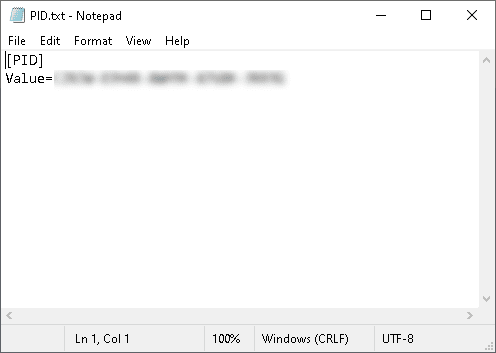I've only encountered this twice in my career. The
first time was a few years ago when I had just started at an MSP (Managed
Service Provider). I'd been tasked with refurbing a laptop and, for the life of
me, couldn't get Windows 10 Pro to install! No matter what I did, Windows 10
Home would always install.
My supervisor was also stumped and ended up (very naughtily)
installing a KMS crack while cursing the customer out for being such
cheap-asses. Which they were, to be fair. But the extent of the
cheap-assed'ness of this particular fashion brand is a tale best kept for
another day. Some pretty good tales too! (Spoiler: I once knocked the internet
in their three storey building because I rebooted a Windows Small Business
Server which hosted their only DNS service. This was in 2019).
The second time happened last month. After pleading with one
of the bosses to buy me a test device (ended up getting a LenovoV14 Core i3 8GB 128GB SSD 14" at a pretty damn good price), I ran
into the same thing. Except this time a KMS crack wouldn't fly as this was
meant to be a test device to be used out at our corporate clients.
Dammit.
What's worse is that I couldn't bring my stupid pride and
dumb ego to admit to the guy who approved the purchase that I'd overlooked
something like this.
Double dammit.
But whhhhyyyyyy.
I’ll tell you why. This is because some devices have what is called an…
OEM SLP Key
Some of the
cheaper laptops come with
System Locked Preinstallation Keys
in the UEFI BIOS Which is a hardware-locked OEM key for Windows 10, and meant that
when Windows looked for activation keys, the hardware-locked OEM always came
out on top, even though there were other activation keys.
The setup
first looks into the ACPI tables to see if it finds a product key (license key)
there, usually this is the case with systems that come ex works with Windows
8.x or newer. Based on the key, the corresponding Windows edition is then
installed.
So if
Windows 10 Home was installed on the computer by the manufacturer, it will be
automatically installed again.
I suppose vendors
like Lenovo reason that these types of consumers will be happy with Windows 10 –
why would they splurge on an OS if they cheeped out on hardware? It still doesn’t
make a whole lot of sense to me but that’s the only defense I can come up with
on their behalf. That, or they got one killer of a deal from Microsoft. But
even then… you know what, it doesn’t matter anymore.
Mercifully,
the order that Windows 10 looks for its activation key doesn’t start
with the OEM SLP key. Or it can be superseded at least. But it requires a bit of
*ahem* manual intervention with the installation media.
Took me a
while to find but I dug up this interesting bit of Microsoft Documentation: WindowsSetup Edition Configuration and Product ID Files (EI.cfg and PID.txt) |Microsoft Docs
So with that
knowledge in hand; first step is making some installation media:
- Howto Download a Windows ISO Directly from Microsoft
- Howto Download Windows 10 with MediaCreationTool
Second step is using one of the following two methods:
Method 1: Set
up edition selection (EI.cfg)
To be able to actually choose which edition of Windows you want to be install during installation, all you have to do is insert a file with the name "ei.cfg" ("ei" stands for "Edition ID") in the folder "sources". This file has the following contents:
Method 2: Include
a product key during installation (PID.txt)
There is a file called PID.txt in the sources folder that Windows 10 Installation Media will look for first. If this file is found, it will use the generic product key found in this file. A Microsoft Digital Marker (MSDM) that has a unique OEM System Locked Preinstallation Key will be the next thing it looks for, so it will do that.
You basically just throw your product key into the PID.txt file and, in turn, throw that file into the sources directory on your install media.
According to Microsoft: “You can reuse the product key in the product ID file for multiple installations. The product key in the product ID file is only used to install Windows. This key is not used to activate Windows.”
But I haven’t
experienced any problems since that initial installation. And I wipe that
device all the time.
![Thomas' [insert something catchy] Blog](https://blogger.googleusercontent.com/img/a/AVvXsEhS8GpCgv6XrthlM6yk83QRMLhw3N-t-T7QC5e2xkElAyFOdKxrHBtlBm1JAcXwJ8yoREOLZIQVGzlBJYcGzbpN5MoJylSohJgXI2qWTeIuLfOupK48G8FVeH5FYa-orAALT8J3sBSWb75EiTS1xCi-ik4uhVgX9ouwjGw1KTmk2lPi258tyzaNU9vu=s800)



